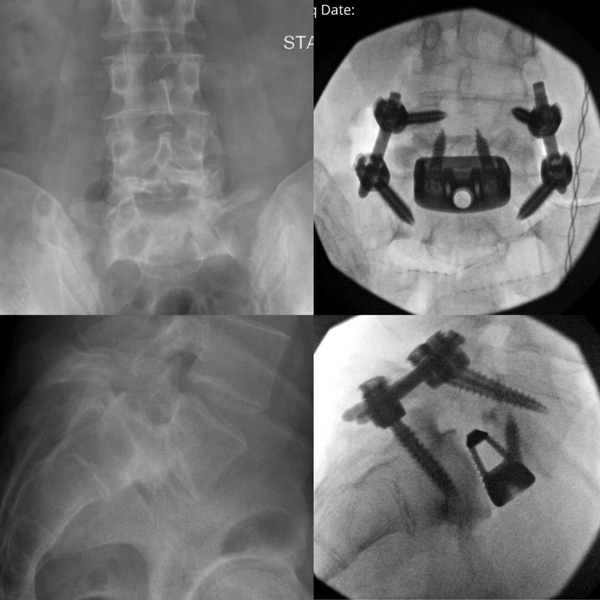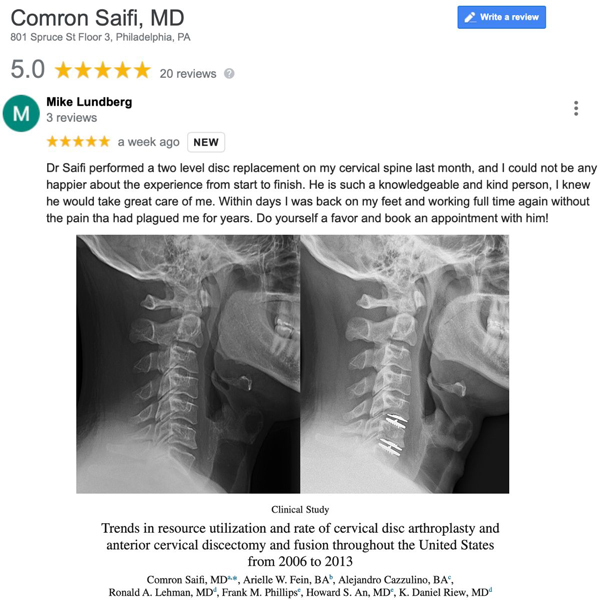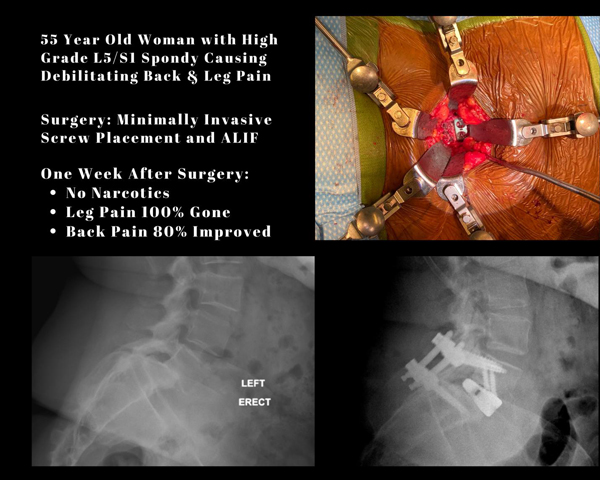“The best gift is the appreciation from our postoperative patients.”
“I had the privilege of operating on a 42-year-old gentleman with severe low back pain due to a high-grade spondylolisthesis at L5/S1. Given his worsening pain, he was no longer able to do the activities he once enjoyed including playing with his kids.
We achieved all of our surgical goals for him today, including anatomic restoration of his lordosis, reduction of his slip, restoration of his foraminal height (decompressing his L5 nerve roots), and stabilization of L5/S1, through an ALIF and a minimally invasive (1.5 inch incision b/l) posterior approach.
He is currently walking and full strength throughout. His postop plan is for discharge home tomorrow given the minimally invasive (MIS) technique and multimodal analgesia with paraspinal and rectus sheth block.”

“This gentleman had neck and arm pain that failed years of nonoperative treatment. He was back to his normal routine without pain a few days after surgery.
Clinical studies by our research team and others have demonstrated that despite the excellent clinical results for a two-level cervical disc replacement, which includes preservation of neck motion and a lower rate of revision surgery compared to fusion at 7 years (5.6% vs 17.1%), cervical disc replacement surgery is performed significantly less compared to fusion. We discuss some potential factors in one of our research studies below.”

“Restoration of anatomic lordosis and alignment at L5/S1 with an ALIF and percutaneous screws, which allowed my patient a faster recovery with less pain.”

“I discussed preoperative predication strategies for complications and the impact on healthcare costs at Wharton Business School.
My research team is currently working with data analytics scientists to analyze clinical outcome data from our patients who undergo spine surgery.
By utilizing artificial intelligence, we hope to provide personalized medicine to our patients. AI may allow precise prediction modeling for each individual patient’s outcomes and risks prior to surgery. This would allow for a specific surgical plan that minimizes risk while providing the best clinical outcome for each individual patient.”






